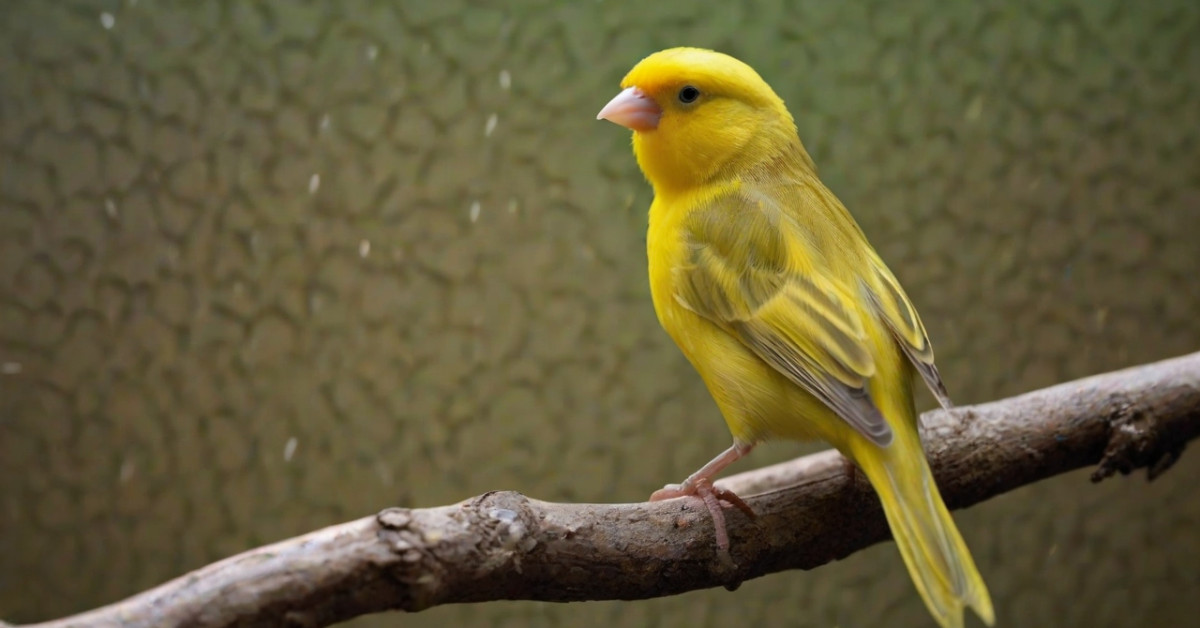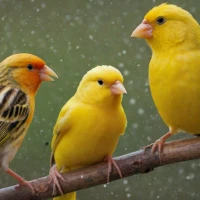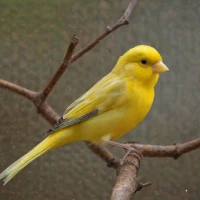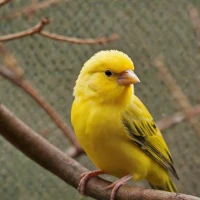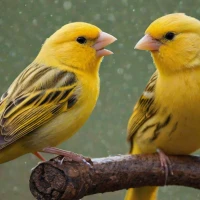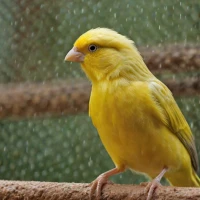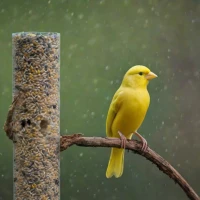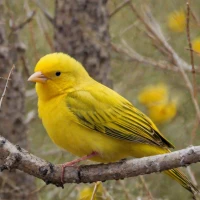Canary Care 101: Tailored Tips for Different Types of Canaries
Ever since the day I stumbled upon a tiny canary trapped inside a supermarket, chirping in distress, I’ve been enamored with these little songbirds. I brought that baby home, nursed it back to health—and in turn, it nursed my curiosity about canaries. Now, with years of experience, I can’t help but share what I know.
Understanding Different Types of Canaries
There’s a whole universe of canary varieties, each with its own quirks and needs. Basically, you’ve got three main categories: Color Canaries, Type Canaries, and Song Canaries. Simple, isn’t it? But, oh boy, the care for each can get complex.
Color Canaries
Color Canaries are like the rock stars of the canary world. Their plumage comes in a stunning array of colors from vivid reds to soft yellows. But getting them to maintain their vibrant shades can be a challenge. I remember when my cousin Liz asked me, “Why’s my canary looking so drab?” Turns out, poor diet was the culprit. Regular carotenoid supplements often do the trick to keep those colors poppin’.
Type Canaries
Type Canaries are bred for their body shape and plumage rather than color or song. Take the Gloster Canary, for instance. They’ve got this adorable little crest that makes them look like punk rockers! But, they come with their own set of needs. In my experience, the biggest challenge is keeping that crest clean and spiffy. A regular gentle wipe with damp cotton can do wonders.
Song Canaries
Last but definitely not least—Song Canaries. Their melodious tunes are music to any bird enthusiast’s ears. Let’s face it, there’s nothing more enchanting than waking up to a canary serenade. My uncle Joe had a Timbrado Spanish Canary that could rival any operatic tenor. The twist? Song Canaries need a quiet environment free of loud noises to develop their song repertoire effectively.
Housing Your Canary
Choosing the right habitat for a canary is crucial. When I set up my first canary cage, I remember being overwhelmed by the choices. Not all cages are created equal; your canary’s sense of space matters.
Cage Dimensions and Bar Spacing
Canaries need plenty of room to flit and flutter. A minimum of 18 inches high and wide for a single canary. But, remember, bigger is better! When I upgraded to a more spacious cage, my canary’s happiness quotient shot through the roof.
Perch Placement
The perch is more than just a resting place. It’s a vantage point, a scratching post, and sometimes even a mini obstacle course. Place multiple perches at different heights and angles, but avoid plastic. Wooden perches are way better, trust me.
Diet and Nutrition
A canary’s diet is more complex than it looks. Seeds alone won’t cut it. A proper diet includes a mix of seeds, fresh fruits, vegetables, and occasional protein sources like boiled eggs.
Seed Mixtures
You’ll find various seed mixtures marketed as “canary food.” Look for mixes with a variety of seeds like flax, hemp, and niger for balanced nutrition.
Fresh Foods
Apples, spinach, and even carrots can be delightful treats for your canary. I remember Toto, my first canary, had an addiction to apple slices. Just be cautious and remove any uneaten fresh food after a few hours to prevent spoilage.
Health and Wellbeing
Keeping a canary healthy is akin to looking after a delicate flower. They can be quite sensitive to changes in their environment.
Common Health Issues
Respiratory issues, mites, and avian pox are some common problems. I learned this the hard way when my canary, Sunny, developed respiratory issues after a drastic temperature change. Always monitor temperature and humidity levels in their space.
Regular Vet Checkups
Don’t skimp on this one. Regular vet visits can catch issues before they become major problems. A vet once said to me, “A yearly check-up can make the difference between a healthy chirp and a sorrowful silence.” How right he was.
Breeding Canaries
Breeding canaries can be both a joy and a challenge. If you’re thinking about it, there are several steps to consider.
Choosing Mates
Pairing the right canaries is essential. I once tried pairing two Glosters, both with crests. Big mistake! It’s important to pair a crested bird with a non-crested one to avoid health issues in offspring.
Nesting Materials
Using the right nesting materials is crucial for the comfort of the female canary. Soft fibers like cotton or special nesting material available at pet stores are ideal. I remember my mum crafting little nest liners from soft, natural fibers—our canaries loved them.
Mental Stimulation and Enrichment
Canaries are intelligent creatures who need mental stimulation to stay happy and healthy.
Toys and Activities
Small mirrors, bells, and ladders can provide hours of entertainment. I once made the mistake of getting a canary a squeaky toy meant for a parrot—big no-no. Stick to simple toys suited for smaller birds.
Social Interaction
While not as social as parrots, some canaries do appreciate gentle interaction from their human companions. Whistling back and forth can be a delightful game.
Random Canary Fact
Did you know that canaries have been bred for over 400 years? It was the Spanish that first domesticated these little avian wonders.
In closing, caring for a canary involves more than just feeding it seeds and admiring its beauty. It’s about understanding their unique needs, paying attention to their health, and providing a loving, enriching environment. Whether you’re a newbie or a seasoned bird enthusiast, I hope you find these tips helpful for keeping your canary chirpy and cheerful.
Overall, canary care is a rewarding experience that fills your home with the joy of melodious tunes and vibrant colors. If you ever get a chance to bring one—or more—into your life, take it! 🙏 Thanks for reading and happy bird-keeping! 🎶🌟
